
Mary, also known as Maria of Anjou, reigned as Queen of Hungary and Croatia between 1382 and 1385, and from 1386 until her death. She was the daughter of Louis the Great, King of Hungary and Poland, and his wife, Elizabeth of Bosnia. Mary's marriage to Sigismund of Luxembourg, a member of the imperial Luxembourg dynasty, was already decided before her first birthday. A delegation of Polish prelates and lords confirmed her right to succeed her father in Poland in 1379.

Charles of Durazzo, also called Charles the Small, was King of Naples and the titular King of Jerusalem from 1382 to 1386 as Charles III, and King of Hungary from 1385 to 1386 as Charles II. In 1381, Charles created the chivalric Order of the Ship. In 1383, he succeeded to the Principality of Achaea on the death of James of Baux.

The Order of the Dragon was a monarchical chivalric order only for selected higher aristocracy and monarchs, founded in 1408 by Sigismund of Luxembourg, who was then King of Hungary and Croatia and later became Holy Roman Emperor. It was fashioned after the military orders of the Crusades, requiring its initiates to defend the cross and fight the enemies of Christianity, particularly the Ottoman Empire.

Elizabeth of Bosnia was queen consort of Hungary and Croatia, as well as queen consort of Poland, and, after becoming widowed, the regent of Hungary and Croatia between 1382 and 1385 and in 1386.

Nicholas II Garai was a powerful Hungarian baron who served as the Palatine of Hungary from 1402 until 1433 and the ban of Macsó, Usora, Só, Slavonia, Croatia and Dalmatia. He also ruled over the Braničevo, Syrmia, Bačka, Banat and Baranya regions through vassals. Together with his close ally Stibor of Stiboricz, he remained one of the richest and most powerful nobles in Hungary for over 30 years. Nicholas II Garai also served as de facto ruler of Hungary next to King Sigismund. In 1416 Sigismund extended their armorial bearings showing the Order of the Dragon and the Order of the Scarf. He presented the patent to his brother-in-law. Nicholas II's first wife was Theodora of Serbia, daughter of Prince Lazar of Serbia. In 1405, he married Anna of Cilli, sister of King Sigismund's second wife, Barbara of Cilli, thereby becoming brother-in-law of the King and Queen of Hungary. His granddaughter Anna was engaged to King Matthias Corvinus.

Stibor of Stiboricz of Ostoja was an aristocrat of Polish origin in the Kingdom of Hungary. He was a close friend of King Sigismund of Hungary who appointed him to several offices during his reign. For instance, between 1395 and 1401, then from 1409 to 1414 he was the Voivode of Transylvania. Stibor styled himself "Lord of the whole Vág", referring to his properties along the 409-km-long river where 15 of his 31 castles were situated.

Nicholas I Garai was a most influential officeholder under King Louis I and Queen Mary of Hungary. He was ban of Macsó between 1359 and 1375, and palatine from 1375 until his death. He was also ispán or head of a number of counties over his lifetime.
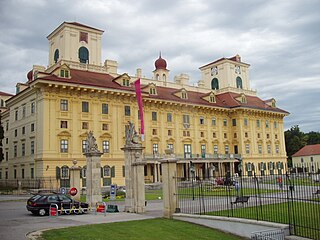
The upper nobility was the highest stratum of the temporal society in the Kingdom of Hungary until 1946 when the Parliament passed an act that prohibited the use of noble titles, following the declaration of the Republic of Hungary.

The Voivode of Transylvania was the highest-ranking official in Transylvania within the Kingdom of Hungary from the 12th century to the 16th century. Appointed by the monarchs, the voivodes – themselves also the heads or ispáns of Fehér County – were the superiors of the ispáns of all the other counties in the province.
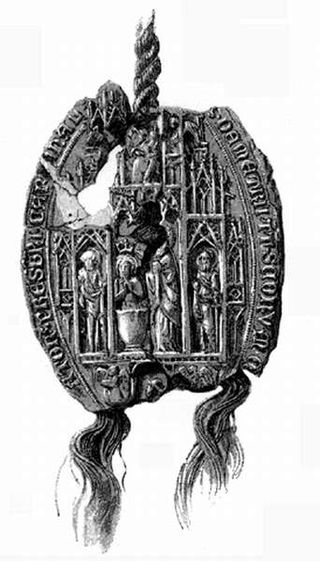
Demetrius, was a Hungarian cardinal and politician, who served as archbishop of Esztergom and bishop of Zagreb and Transylvania, and chancellor.

Ladislaus Garai, also Ladislas Garai, was Palatine of Hungary from 1447 to 1458, and Ban of Macsó between 1431 and 1441 and from 1445 and 1447.

Nicholas from the kindred Pok was a Hungarian influential lord in the Kingdom of Hungary at the turn of the 13th and 14th centuries. He held positions in the royal court in the 1270s. He acquired extensive landholdings and estates in the area between the rivers Tisza and Szamos (Someș). He was among the so-called oligarchs, who ruled de facto independently their dominion during the era of feudal anarchy. He was also ancestor of the Meggyesi noble family, thus later charters also referred to him as Nicholas Meggyesi.
Stephen Sáfár de Csév was a Hungarian diplomat, soldier and noble in the first half of the 14th century, a loyal supporter of Charles I of Hungary and his consolidation efforts. In this regard, Stephen served as ispán of Pilis County and castellan of Visegrád Castle, simultaneously from 1318 until his death.
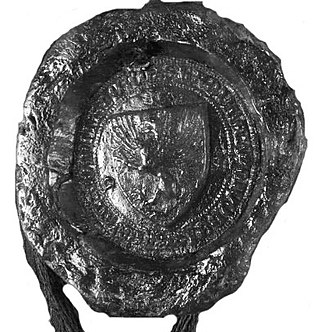
Ladislaus (I) Losonci was a powerful Hungarian baron, who served as Count of the Székelys from 1373 to 1376, and Voivode of Transylvania from 1376 to 1385 and from 1386 until his death. He was a staunch supporter of Mary, Queen of Hungary after 1382. In contemporary records, he was often called Ladislaus the Elder to distinguish him from his namesake relative Ladislaus II Losonci.

Frank Szécsényi, also Francis, was a Hungarian baron and military leader, who was a staunch supporter of King Sigismund of Luxembourg. He participated in various military campaigns against the Ottoman Empire. In 1401, he joined the magnate conspiracy against Sigismund, but returned to the king's allegiance shortly thereafter, retaining his political influence until his death.
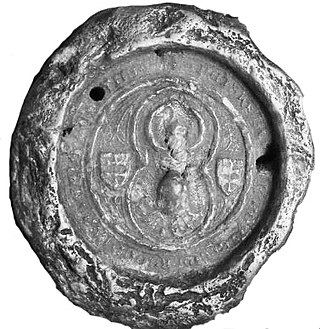
Simon Szécsényi, was a Hungarian baron and military leader, who was a staunch supporter of King Sigismund of Luxembourg since the 1380s. Joining a magnate conspiracy in 1401, he played a key role in the arrest of the king, but later was pardoned and retained his political influence until his death.
Kónya Szécsényi, was a Hungarian baron, who served as Ban of Croatia and Dalmatia from 1366 until his death, during the reign of King Louis I of Hungary.

Anthony (I) Erdélyi de Somkerék was a Hungarian nobleman and loyal courtier of King Sigismund of Luxembourg. He was familiaris of Nicholas Garai, Palatine of Hungary. Initially known as Anthony of Somkerék, he was the founder of the distinguished Erdélyi de Somkerék noble family.
Vásári was a noble family in the Kingdom of Hungary, which first appeared in the late 13th century and had estates and villages mostly in Bihar County.
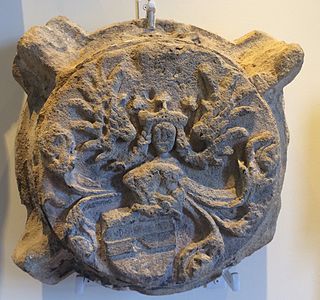
Ladislaus of Ilok was a Croato–Hungarian nobleman, a member of the Iločki noble family. He held the dignity of Ban of Macsó (Mačva), as well as župan of Baranya, Bodrog, Srijem, Vukovar and Tolna in the associated kingdoms Hungary and Croatia.

















